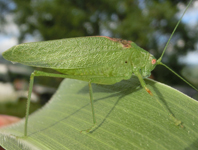Abstract
Labrys khuzestanensis n. sp. was recovered from the rhizosphere of a palm tree in southwestern Iran and described using morphological and molecular data. The new species was characterized by combination of the following features: its 590–675 μm long body, finely annulated cuticle in light microscopy (LM), lateral field with two smooth incisures, cephalic region dorso-ventrally flattened with protuberant, elongate and laterally extended labial plate, appearing a V-shaped piece in lateral view, amphidial openings as longitudinal slits confined to labial plate in scanning electron microscopic (SEM) images, stylet 7.5–9.0 μm long, elongated fusiform median bulb with faint valvular apparatus, excretory pore wide with moderately sclerotized duct and elongate filiform tail with finely rounded tip. Compared to four currently known species under the genus, the new species has a remarkably larger and more prominent labial plate as revealed by SEM and trapezoid cephalic region under LM. The molecular phylogenetic analyses of the new species using partial SSU rDNA revealed it has close affinity with three species of Labrys (L. chinensis, L. fuzhouensis and L. filiformis) in Bayesian inference (BI) and maximum likelihood (ML) methods and occupied a placement inside their clade. L. fujianensis, the other species of the genus, occupied a distant placement to the aforementioned clade. This is the second species of Labrys being originally described from Iran, representing the third species of Labrys occurring in the country.
References
Abolafia, J. (2015) A low cost technique to manufacture a container to process meiofauna for scanning electron microscopy. Microscopy Research and Technique, 78, 771–776.
https://doi.org/10.1002/jemt.22538
Darriba, D., Taboada, G.L., Doallo, R. & Posada, D. (2012) jModelTest 2: more models, new heuristics and parallel computing. Nature Methods, 9, 772.
https://doi.org/10.1038/nmeth.2109
De Grisse, A.T. (1969) Redescription et modification de quelques techniques utilisées dans l’étude des nematodes phytoparasitaires. Mededelingen Faculteit Landbouwwetenschappen, 34, 351–369.
De Ley, P. & Blaxter, M.L. (2002) Systematic position and phylogeny. In: Lee, D.L. (Ed.), The Biology of Nematodes. Taylor & Francis, London, pp.1–30.
https://doi.org/10.1201/b12614-2
Edgar, R.C. (2004) MUSCLE: Multiple sequence alignment with high accuracy and high throughput. Nucleic Acids Research, 32, 1792–1797.
https://doi.org/10.1093/nar/gkh340
Holterman, M., van der Wurff, A., van den Elsen, S., van Megen, H., Bongers, T., Holovachov, O., Bakker, J. & Helder, J. (2006) Phylum-wide analysis of SSU rDNA reveals deep phylogenetic relationships among nematodes and accelerated evolution toward crown clades. Molecular Biology and Evolution, 23, 1792–1800.
https://doi.org/10.1093/molbev/msl044
Husain, S.L. & Khan, A.M. (1967) A new subfamily, a new subgenus and eight new species of Nematodes from India belonging to superfamily Tylenchoidea. Proceedings of the Helminthological Society of Washington, 34, 175–186.
Huson, D.H. & Scornavacca, C. (2012) Dendroscope 3: An interactive tool for rooted phylogenetic trees and networks. Systematic Biology, 61, 1061–1067.
https://doi.org/10.1093/sysbio/sys062
Khan, E., Mathur, V.K., Nand, S. & Prasad, S.K. (1968) Two new nematode species in the family Neotylenchidae from India. Labdev Journal of Science and Technology, 6B, 186–189.
Konani, E., Panahandeh, Y., Pourjam, E., Álvarez-Ortega, S. & Pedram, M. (2018) Two rare species of tylenchids, Discotylenchus biannulatus n. sp. and Labrys chinensis (Nematoda: Tylenchidae) from western Iran. Zootaxa, 4413 (2), 260–270.
https://doi.org/10.11646/zootaxa.4413.2.2
Mehrabian, F., Azizi, K., Bazgir, E. & Darvishnia, M. (2017) Morphological and molecular characterisation of Discotylenchus lorestanensis sp. n. (Nematoda: Tylenchidae) from Iran. Zootaxa, 4290 (1), 167–176.
https://doi.org/10.11646/zootaxa.4290.1.10
Miller, M., Pfeiffer, W. & Schwartz, T. (2010) Creating the CIPRES science gateway for inference of large phylogenetic trees. Gateway Computing Environments Workshop (GCE), 2010, 1–8.
https://doi.org/10.1109/gce.2010.5676129
Örley, L. (1880) Monograph of the anguillulids. Természetrajzi Füzetek, 4, 16–150.
Panahandeh, Y., Abolafia, J., Pourjam, E., Jahanshahi Afshar, F., Giblin-Davis, R.M. & Pedram, M. (2018) Morphological and Molecular Characterization of Labrys filiformis n. sp. (Rhabditida: Tylenchidae) from Iran. Journal of Nematology, 50, 343–354.
https://doi.org/10.21307/jofnem-2018-031
Panahandeh, Y., Atighi, M.R., De Ley, I.T., Pourjam, E., Mundo-Ocampo, M., Abolafia, J., Koolivand, D., Jahanshahi Afshar, F. & Pedram, M. (2019) An integrative study of Sakia sisanganensis n. sp. (Rhabditida: Tylenchidae) from Sisangan forest, Iran, and new morphological observations for the genus. Forest Pathology. [in press]
https://doi.org/10.1111/efp.12536
Pedram, M., Soleymanzadeh, M., Pourjam, E. & Mobasseri, M. (2018) Observations on Malenchus geraerti n. sp. (Rhabditida: Tylenchidae), a morphological and molecular phylogenetic study. Zootaxa, 4369 (3), 406–418.
https://doi.org/10.11646/zootaxa.4369.3.6
Qiao, K., Bai, M., Wang, Q., Hou, X., Chen, J., Xiao, S., Liu, G., Bert, W. & Qing, X. (2019a) Unexpected rDNA divergence between two morphologically minimalistic nematodes with description of a new species (Tylenchomorpha: Tylenchidae). Nematology, 21, 57–70.
https://doi.org/10.1163/15685411-00003195
Qiao, K., Bai, M., He, Y., Chen, J., Xiao, S., Cheng, X., Liu, G., Braun-Miyara, S. & Qing, X. (2019b) Description of Labrys fuzhouensis sp. n. and first record of Coslenchus rafiqi (Nematoda: Tylenchidae) from China. Nematology, 21, 693–708,
https://doi.org/10.1163/15685411-00003246
Qing, X. & Bert, W. (2018) 3D printing in zoological systematics: Integrative taxonomy of Labrys chinensis gen. nov., sp. nov. (Nematoda: Tylenchomorpha). Journal of Zoological Systematics and Evolutionary Research, 56, 35–47.
https://doi.org/10.1111/jzs.1219
Qing, X. & Bert, W. (2019) Family Tylenchidae (Nematoda): an overview and perspectives. Organisms Diversity & Evolution, 19, 391–408.
https://doi.org/10.1007/s13127-019-00404-4
Rambaut, A. & Drummond, A.J. (2009) Tracer version 1.5 [computer program]. Available from: http://beast.bio.ed.ac.uk/ (accessed 1 April 201)
Rounquist, F. & Huelsenbeck, J.P. (2003) MrBayes 3: Bayesian phylogenetic inference under mixed models. Bioinformatics, 19, 1572–1574.
https://doi.org/10.1093/bioinformatics/btg180
Stamatakis, A. (2014) RAxML version 8: a tool for phylogenetic analysis and post-analysis of large phylogenies. Bioinformatics, 30, 1312–1313.
https://doi.org/10.1093/bioinformatics/btu033
Soleymanzadeh, M., Pedram, M., Pourjam, E. & Álvarez Ortega, S. (2016) Description of Lelenchus brevislitus n. sp. (Nematoda: Tylenchidae), an example of a cryptic species from Iran and its phylogenetic relationships with other species in the family. Nematology, 18, 987–998.
https://doi.org/10.1163/15685411-00003010
Tamura, K., Stecher, G., Peterson, D., Filipski, A. & Kumar, S. (2013) MEGA6: Molecular evolutionary genetics analysis version 6.0. Molecular Biology and Evolution, 30, 2725–2729.
https://doi.org/10.1093/molbev/mst197
Troccoli, A. & Geraert, E. (1995) Some species of Tylenchida (Nematoda) from Papua New Guinea. Nematologia Mediterranea, 23, 283–298.
Whitehead, A.G. & Hemming, J.R. (1965) A comparison of some quantitative methods for extracting small vermiform nematodes from soil. Annals of Applied Biology, 55, 25–38.
https://doi.org/10.1111/j.1744-7348.1965.tb07864.x

